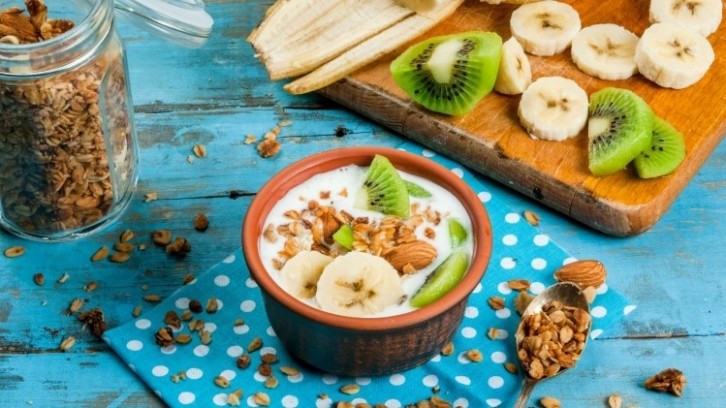User-friendly guidelines: Opportunity for industry to help Indonesian consumers fulfil breakfast needs

Indonesia grapples with a triple challenge in nutrition: malnutrition, undernutrition, and over-nutrition. These challenges co-exist with a deficiency in essential micronutrients.
According to the most recent National Total Diet Study conducted in 2014, the dietary habits of Indonesians continue to be predominantly centered around cereal and plant protein sources for breakfast.
Unfortunately, this dietary pattern falls far short of recommended levels for fruit and vegetable intake, while the consumption of sugar, salt, and fat is approaching the maximum recommended thresholds.
Various studies conducted among both women and men in Indonesia have consistently indicated that the overall quality of their diets, as assessed through various measures of diet quality, is subpar, and requires improvement to align with the country's dietary guidelines.
This study conducted a secondary analysis of data from the 2018 Indonesian Food Barometer (IFB) study, originally carried out by SEAMEO RECFON. The IFB study was a cross-sectional survey that encompassed six provinces in Indonesia, where 48% of the population resides. These provinces included West Sumatra, Jakarta, West Java, East Java, Bali, and South Sulawesi.
The survey involved 1,333 adults aged 18 years and older, who were randomly selected using a multistage cluster random sampling approach. The sampling strategy aimed to accurately represent both urban and rural populations within the six provinces, with an intentional oversampling of urban areas to facilitate potential comparisons.
For the context of this study, breakfast was defined as eating/drinking activities anytime before 9:00 a.m. The study also stipulated that the meal should meet about 15% to 30% of the Recommended Dietary Allowance (RDA).
Research indicates the importance of breakfast and its positive effect on dietary quality and health condition. Studies in other countries revealed that breakfast irregularity or skipping was associated with lower nutrient intake and diet quality, higher risk of obesity, and poorer school performance.
Furthermore, a meta-analysis of observational studies conducted among adults demonstrated a significant association between skipping breakfast and an elevated risk of developing type 2 diabetes mellitus.
The prevalence of breakfast skipping was notably higher in several demographic groups, including the urban population (6.5%), adults aged 18–29 years (7.3%), non-married individuals (8.9%), and those classified as underweight (10%).
The quality of breakfast was also notably lower among specific demographic groups, including younger individuals, females, urban residents, and single individuals. Among all subjects, breakfast was particularly high in saturated fat, vitamin A, and sodium intake.
In contrast, breakfast, as well as all other meals, fell short in terms of intake for fibre, zinc, vitamins C and D, potassium, magnesium, iron, and several B-vitamins.
On average, the study participants had a median daily energy intake of 1626 Kcal, with a median energy intake from breakfast amounting to 396 Kcal. The study indicated that individuals who consumed breakfast had a significantly higher median daily energy intake compared to those who skipped breakfast (1639.4 Kcal vs. 1429.8 Kcal).
Among those who consumed breakfast, the morning meal contributed to approximately 25% of their daily macronutrient intake, except for sugar intake, which constituted only 11.7%. Further, breakfast provided around 21–28% of daily intake for all micronutrients, except for vitamin C and D, which make up only 8.1% and 6.8% of daily intake, respectively.
While the direct relationship between breakfast consumption and the Nutrient-Rich Food Index (NRF) 9.3 score was not observed, this study does reveal that a higher NRF 9.3 score is associated with a more favourable nutrient profile from breakfast consumption.
The reserachers explained: “The Nutrient-Rich Food Index (NRF) 9.3 is a validated nutrient profiling method to measure the quality of overall diet. The NRF index calculates nutrient density based on 12 nutrients and total energy intake. These nutrients were divided into 9 qualifying nutrients (NRs) and 3 disqualifying nutrients (LIM).
“The qualifying nutrients and reference daily values (DVs) are as follows: protein (60 g), magnesium (350 mg), dietary fiber (30 g), vitamin A (600 RAE), vitamin C (90 mg), vitamin D (15 mcg), potassium (4700 mg), calcium (1100 mg) and iron (22 mg). The disqualifying nutrients and maximum recommended values (MRVs) are sodium (1500 mg), saturated fat (20 g) and total sugar (50 g).”
The study findings have implications for the development of nutrient-based recommendations for a well-balanced breakfast in Indonesia, as well as detailing NPD opportunities for industry, in order to address the existing deficiencies in nutrient intake.
Nonetheless, it is imperative to conduct further research to translate these nutrient-based guidelines into more user-friendly, food-based recommendations that consumers can easily understand and implement, the researchers stated.
Study: Breakfast Consumption and Quality of Macro- and Micronutrient Intake in Indonesia: A Study from the Indonesian Food Barometer
Source: Nutrients
doi: 10.3390/nu15173792
Authors: Helda Khusun, et al






















